| Date | Text | |
|---|---|---|
30 Nov 1967
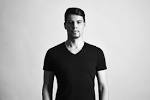
Thomas Gold |
Thomas Gold (astronomy) Thomas Gold explains the recently discovered radio pulsars as rapidly rotating neutron stars; subsequent observations confirm the suggestion. |
|
30 Nov 1967
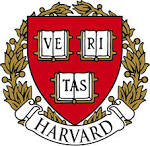
Harvard |
Harvard (medicine) Publication of a Harvard committee report on irreversible coma establishes a paradigm for defining brain death. |
|
30 Nov 1967

bone marrow transplant |
bone marrow transplant (medicine) Doctors perform the first successful bone marrow transplant, to treat severe combined immunodeficiency (SCID). |
|
30 Nov 1967

Georges Charpak |
Georges Charpak (physics) Georges Charpak develops the multiwire proportional chamber for particle detection at CERN. |
|
30 Nov 1967
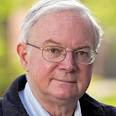
John Darley |
John Darley (psychology) John Darley and Bibb Latané demonstrate the bystander effect. |
|
30 Nov 1967

Walter Mischel |
Walter Mischel (psychology) Walter Mischel publishes Personality and Assessment. |
|
30 Nov 1967
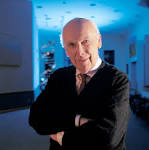
James D. Watson |
James D. Watson (publications) James D. Watson – The Double Helix: A Personal Account of the Discovery of the Structure of DNA. |
|
30 Nov 1967

Turing Award |
Turing Award (awards) Turing Award – Richard Hamming |
|
01 Jan 1968

Miomir Vukobratović |
Miomir Vukobratović (robotics) Miomir Vukobratović proposes Zero Moment Point, a theoretical model to explain biped locomotion. |
|
02 Jan 1968
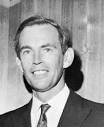
Christiaan Barnard |
Christiaan Barnard (medicine) Dr. Christiaan Barnard performs the second successful human heart transplant, in South Africa, on Philip Blaiberg, who survives for nineteen months. |
|
22 Feb 1968
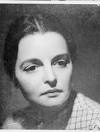
May Smith |
death May Smith May Smith (born 1879), English experimental psychologist. |
|
27 Mar 1968
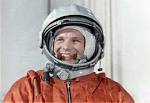
Yuri Gagarin |
death Yuri Gagarin Yuri Gagarin (born 1934), Russian cosmonaut, the first man in space. |
|
01 Apr 1968
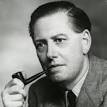
Andrew Garve |
Andrew Garve (computer science) First book printed completely using electronic composition, the United States edition of Andrew Garve's thriller The Long Short Cut. |
|
01 Apr 1968
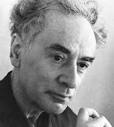
Lev Davidovich Landau |
death Lev Davidovich Landau Lev Davidovich Landau (born 1908), Russian physicist. |
|
04 Apr 1968

United States |
United States United States theatrical release of Stanley Kubrick's film 2001: A Space Odyssey, based on a story by Arthur C. Clarke. |
|
12 Apr 1968

Nerve gas accident |
Nerve gas accident In 1968, a sudden outbreak of startling sheep deaths in Skull Valley, Utah, was attributed to a nerve gas sprayed earlier by the Army on the nearby Dugway Proving Grounds. The investigation made by the National Communicable Disease Center was hampered by the Army's initial denial of responsibility and slowness to provide adequate gas samples for independent agencies to check. The debacle led to an overhaul of procedures concerning development of chemical weapons at Dugway. |
|
03 May 1968
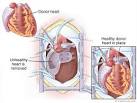
Heart transplant |
Heart transplant In 1968, Dr. Denton Cooley of the Texas Heart Institute performed the first successful heart transplant in the United States on Everett Thomas, whose heart was damaged from rheumatic heart disease. The patient lived for 204 days with the heart donated from a 15-year-old girl. In 1969, Cooley became the first heart surgeon to implant an artificial heart in man. |
|
18 Jul 1968

Intel incorporates |
Intel incorporates In 1968, the Intel Corporation, inventor of the microchip, was incorporated. In 1968, a Hungarian immigrant by the name of Andy Grove co-founded Intel with a collaboration of colleagues with the same interest, to revolutionize the computer world. In 1971, Intel released its first microprocessor, the 4004 designed for a calculator. In 1972 came the more powerful 8008. With the introduction of the 8080 in 1974, the first personal computers were made possible. |
|
18 Jul 1968

Intel founded |
Intel founded In 1968, Intel Corporation was founded by Gordon E. Moore and Robert Noyce, originally incorporated as “NM Electronics.” The familiar short name, based on “Integrated Electronics” was adopted later in the year. In 1969, its first product was a RAM (random access memory) chip. By 1974, they introduced the 8080 microprocessor, which was quickly adopted in hundreds of products, including traffic lights, cash registers, and the earliest personal computers (such as the Altair 8800 hobbyist kit in 1975). Intel has grown to become the world's largest semiconductor chip maker (by revenue). |
|
18 Jul 1968

Corneille Heymans |
death Corneille Heymans Died 18 Jul 1968 at age 76 (born 28 Mar 1892). Belgian physiologist who received the Nobel Prize for Physiology or Medicine in 1938 for his discovery of the regulatory effect on respiration of sensory organs associated with the carotid artery in the neck and with the aortic arch leading from the heart (1927-29). |
|
18 Jul 1968

semiconductor chip |
semiconductor chip (computer science) The semiconductor chip company Intel is founded by Gordon E. Moore and Robert Noyce in Mountain View, California. |
|
22 Jul 1968

Muthulakshmi Reddi |
death Muthulakshmi Reddi Muthulakshmi Reddi (born 1886), Indian physician and social reformer. |
|
28 Jul 1968

Otto Hahn |
death Otto Hahn Otto Hahn (born 1879), German chemist who received the 1944 Nobel Prize in Chemistry. |
|
24 Aug 1968
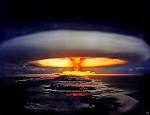
French H-bomb |
French H-bomb In 1968, France exploded a hydrogen bomb over a South Pacific testing ground and became the world's fifth thermonuclear power. The Canopus test used a 3 tonne device suspended at an altitude of 600 m from a balloon over Fangataufa Atoll, 41 km south east of Moruroa. The project was led by a young physicist, Roger Dautry.This was France's largest nuclear device. It produced a yield of 2.6 megatons, and used a lithium-6 deuteride secondary jacketed with highly enriched uranium. The resulting contamination of the atoll kept it off limits to humans for six years, after which France resumed their nuclear program there with underground tests. |
|
15 Sep 1968
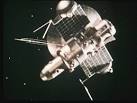
Zond program |
Zond program (space exploration) Zond program: Soviet spacecraft Zond 5 becomes the first vehicle to circle the Moon (September 18) and return to splashdown on Earth. It also carries the first living organisms to circle the Moon, including two Russian tortoises, Piophila, mealworms, plants and bacteria. |
|
11 Oct 1968
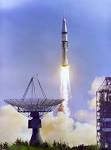
Apollo 7 launch |
Apollo 7 launch In 1968, the first manned Apollo mission, Apollo 7, was launched on a Saturn 1-B rocket from Cape Kennedy. The astronauts onboard were the Captain Wally Schirra, Jr. (Navy), with crew members Donn Fulton Eisele (Air Force) and R. Walter Cunningham (civilian). They circled for 11 days, up to 183 miles above the Earth, in 90 minute orbits. They tested maneuvering the Apollo, first by detaching it from the upper stage of the rocket, Next, they turned the Apollo around to reposition its nose toward the rocket. On the subsequent Apollo 11 mission, the vehicle would link to the moon landing craft carried inside the cylinder. For Apollo 11, the stage would then boost the combined crafts towards the moon. |
|
11 Oct 1968
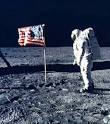
Apollo program |
Apollo program (space exploration) Apollo program: NASA launches Apollo 7, the first manned Apollo mission, with astronauts Wally Schirra, Donn Fulton Eisele and R. Walter Cunningham aboard. Goals for the mission include the first live television broadcast from orbit and testing the lunar module docking maneuver. |
|
14 Oct 1968
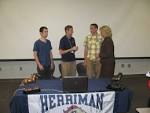
Outer-space telecast |
Outer-space telecast In 1968, the first outer-space live telecast was beamed from Apollo VII in orbit. Captain Walter Schirra, Jr., Major Donn Eisele and Major Walt Cunningham showed views of the satellite and views through the windows. The primary objectives for the Apollo VII engineering test flight, were simple: "Demonstrate Command/Service Module (CSM) and crew performance; demonstrate crew/space vehicle and mission support facilities performance during a manned CSM mission; demonstrate CSM rendezvous capability." The Apollo VII was launched 11 Oct 1968. For nearly 11 days, the Command Module was run through numerous tests. and was recovered after a 260-hour flight and 163 orbits. |
|
27 Oct 1968
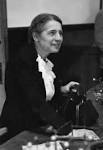
Lise Meitner |
death Lise Meitner Lise Meitner (born 1878), German physicist, discoverer in 1939, with Otto Hahn, of nuclear fission. |
|
01 Nov 1968
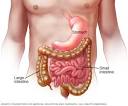
gastroenteritis |
gastroenteritis (medicine) Outbreak of acute gastroenteritis among schoolchildren in Norwalk, Ohio, caused by "Norwalk agent", the first identified norovirus. |
|
09 Dec 1968

The Mother of All Demos |
The Mother of All Demos (computer science) In what becomes retrospectively known as "The Mother of All Demos", Douglas Engelbart of Stanford Research Institute's Augmentation Research Center demonstrates for the first time the computer mouse, the video conference, teleconferencing, hypertext, word processing, hypermedia, object addressing, the dynamic linker and a collaborative real-time editor using NLS. |
|
22 Dec 1968
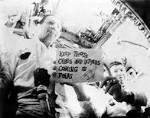
Live space telecast |
Live space telecast In 1968, the first U.S. live telecast from a manned spacecraft in outer space was transmitted at 3:01 p.m. from Apollo VIII. The earth appeared as a blurred ball of light. The craft was 139,000 miles from earth, 31-hr 20-min after launch. the previous day. A total of six live television transmission sessions were done by the crew during the mission, including the famous Christmas Eve broadcast in which the astronauts read from the book of Genesis. The crew for the flight was Captain James Lovell, Colonel Frank Borman and Major William Anders. The primary purpose of this mission was to further progress toward the goal of landing men on the Moon by gaining operational experience and testing the Apollo system. |
|
24 Dec 1968
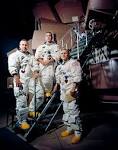
Apollo 8 |
Apollo 8 (space exploration) Apollo 8 enters Moon orbit. Frank Borman, Jim Lovell and William A. Anders are the first humans to see the far side of the Moon and planet Earth as a whole. Anders photographs Earthrise. |